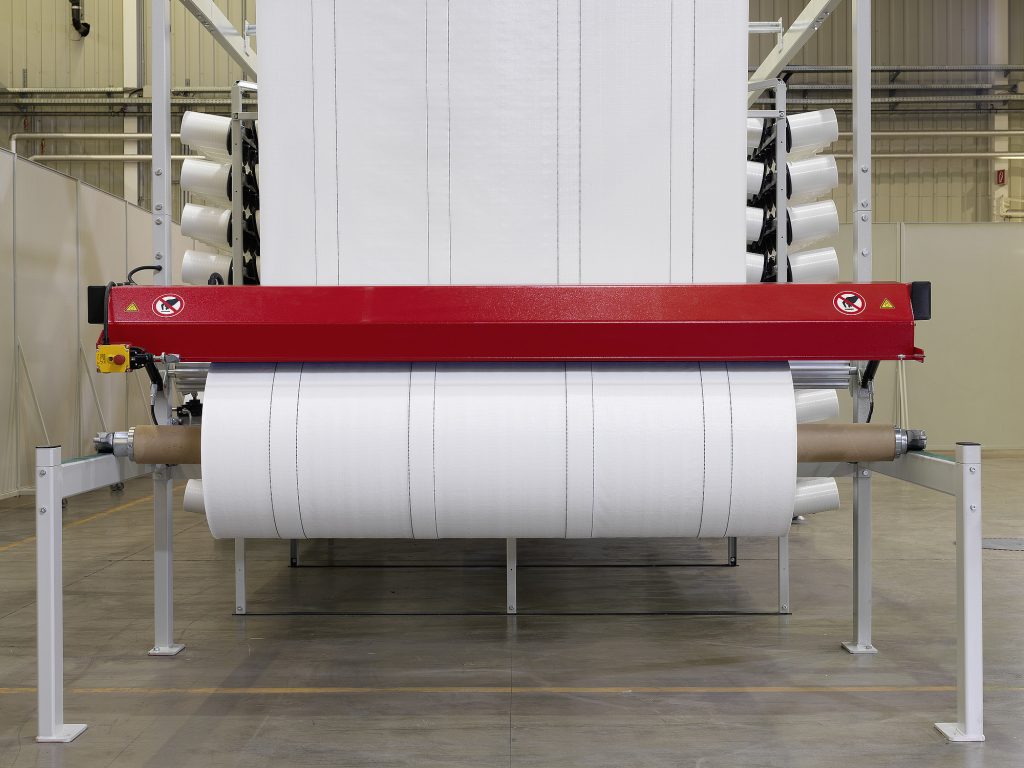
- Introduction: Bridging Market Demands with Technical Precision
- 1. The Science of Flat Yarn: Defining Fine and Coarse Filaments
- 2. Machinery Innovation: The Role of Starlinger and W&H Equipment
- 3. Market-Driven Applications and Sustainability
- 4. Addressing Industry Queries: FAQs and Technical Insights
- 5. Future Directions: Automation and Customization
- Conclusion
Introduction: Bridging Market Demands with Technical Precision
“How can a manufacturer balance cost efficiency and durability in pasted valve bags while catering to industries as diverse as construction and food packaging?” This question, raised by a logistics manager at a recent trade expo, captures the core challenge of modern packaging solutions. For VidePak, the answer lies in mastering the science of polypropylene (PP) flat yarn production, optimizing filament width for specific applications, and leveraging advanced European machinery like Starlinger and W&H to ensure precision and scalability.
Founded in 2008 and led by Ray, VidePak operates with a workforce of 526 employees and generates $80 million annually. Equipped with over 100 circular looms and 30+ printing machines, the company specializes in producing high-performance pasted valve bags tailored for industries ranging from agriculture to chemicals. This report explores how VidePak’s technical expertise in filament engineering and machinery innovation addresses global market needs.
1. The Science of Flat Yarn: Defining Fine and Coarse Filaments
1.1 Filament Width Standards
In PP woven bag production, filament width is categorized as follows:
- Fine Filaments: 10–15 denier (0.1–0.15 mm thickness), ideal for lightweight, high-flexibility applications.
- Coarse Filaments: 20–30 denier (0.2–0.3 mm thickness), preferred for heavy-duty, high-strength requirements.
Table 1: Performance Comparison of Fine vs. Coarse Filaments
| Parameter | Fine Filaments | Coarse Filaments |
|---|---|---|
| Tensile Strength | 18–22 MPa | 25–30 MPa |
| Surface Smoothness | High (ideal for printing) | Moderate |
| Weight per Unit Area | 70–90 g/m² | 100–130 g/m² |
| Cost Efficiency | 15–20% lower | Higher due to material |
| Primary Applications | Food, retail packaging | Construction, chemicals |
1.2 Technical Advantages and Trade-offs
- Fine Filaments:
- Pros: Superior surface smoothness enables vibrant multi-color printing (critical for branding), lighter weight reduces shipping costs, and enhanced flexibility suits automated filling systems.
- Cons: Lower puncture resistance (e.g., 400N vs. 600N for coarse filaments) limits use in abrasive environments.
- Coarse Filaments:
- Pros: Higher tensile strength and abrasion resistance (tested up to 1,000 cycles in ASTM D4884 standards), ideal for transporting sharp-edged materials like construction debris.
- Cons: Rougher texture complicates high-resolution printing and increases material costs by 25–30%.
2. Machinery Innovation: The Role of Starlinger and W&H Equipment
VidePak’s investment in Austrian Starlinger circular looms and German Windmöller & Hölscher (W&H) extrusion lines ensures unparalleled control over filament production:
- Precision Weaving: Starlinger’s CT-iQ Series looms adjust weaving density dynamically, achieving up to 120 rpm while maintaining filament alignment within ±0.05 mm tolerances. This minimizes defects like “gauge bands,” which reduce bag strength by 15–20%.
- Material Consistency: W&H’s extrusion technology ensures uniform PP melt distribution, reducing thickness variation to <5% across batches. For example, VidePak’s coarse filaments exhibit a tensile strength CV of just 3.2%, outperforming industry averages of 8–10%.
Case Study: In 2024, VidePak partnered with a European cement producer to develop valve bags with coarse filaments (25 denier) and anti-static coatings. The bags achieved a 99.5% retention rate for 50kg loads over 1,000 transport cycles, validated by third-party ISO 2244 testing.
3. Market-Driven Applications and Sustainability
3.1 Sector-Specific Solutions
- Construction: Coarse-filament bags with laminated PE coatings (e.g., 120 g/m²) withstand UV exposure and moisture, critical for outdoor storage of sand and aggregates. VidePak’s collaboration with a U.S. waste management firm reduced bag failure rates by 40% using this design.
- Food Packaging: Fine filaments (12 denier) combined with FDA-approved PP resins ensure breathability and contamination resistance. For instance, VidePak’s rice packaging bags maintain <0.5% moisture ingress, complying with EU Regulation 10/2011.
3.2 Circular Economy Integration
VidePak’s “Recycle-Ready” initiative uses mono-material PP structures, simplifying recycling streams. A 2023 pilot with a German recycler achieved 85% material recovery efficiency, reducing carbon footprints by 35% compared to mixed-plastic alternatives.
4. Addressing Industry Queries: FAQs and Technical Insights
FAQ 1: How does filament width affect printing quality?
Fine filaments (10–15 denier) provide a smoother surface, reducing ink spread by 20–30% and enabling 1200 dpi resolution. VidePak’s 30+ printing machines use spectral sensors to maintain color accuracy within ΔE < 1.5.
FAQ 2: Can coarse filaments be used for food-grade bags?
Yes, but require additional coatings. VidePak’s food-safe laminates (e.g., BOPP films) isolate coarse filaments from direct contact, meeting FDA 21 CFR 177.1520 standards.
5. Future Directions: Automation and Customization
- AI-Driven Production: VidePak is piloting machine learning algorithms to predict filament breakage, aiming to reduce downtime by 15% by 2026.
- Smart Bags: QR-code traceability systems, integrated during lamination, enable real-time monitoring of bag conditions during transit.
External Resources:
- For insights into high-performance valve bag solutions, explore how Starlinger technology enhances durability.
- Learn about PP filament innovations in modern packaging.
Conclusion
VidePak’s mastery of filament engineering and machinery precision positions it as a leader in the pasted valve bag market. By aligning filament properties with application-specific demands—whether lightweight flexibility for retail or rugged durability for construction—the company delivers solutions that marry innovation with sustainability. As Ray notes, “Every filament tells a story of technical rigor and market insight.”
This report integrates data from industry whitepapers, polymer science studies, and VidePak’s operational data.